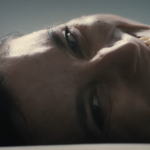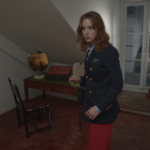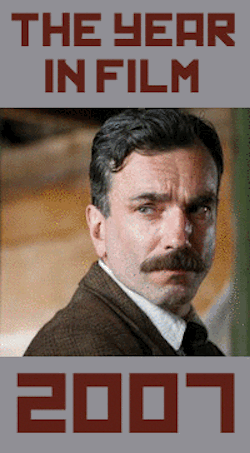Polina: Finding the Rhythm, by Scott Nye
There’s always something a little noxious – and often something fairly disingenuous – to the notion put forth by artists and art-lovers that one must suffer to truly produce good work. History is too stuffed with great bourgeois sculptors, painters, writers, filmmakers, and musicians to lend it much credence. For every one of them who came up from (or never escaped) poverty, there’s at least another who rarely worried where the next meal would come from and managed to make a nice living, if not get fabulously wealthy. It turns out that inspiration isn’t egged on by misery, but by insight and talent for expression.
But so goes Valerie Müller and Angelin Preljocaj’s Polina, about a gifted Russian dancer (Anastasia Shevtsova) who throws away a huge opportunity in favor of following her boyfriend to Paris, where she can’t quite translate her frigid style to their oh-so-emotional imperfect beauty. What with the French and all. If you haven’t heard enough dance instructors in movies shout things like, “don’t just do the choreography, feel it!”, well, at least this time it’s Juliette Binoche shouting.
Shevtsova is an actual ballerina, which is quickly evident, and quite a good interior-focused actress at that. For all the film’s cliches, she is an arresting central figure, constantly managing the tension one faces when one’s entire life’s preparation is proving insufficient. Even if not everybody has faced such a prospect, her struggle is analogous to the too-common sensation of reaching your early twenties and finding that whatever you were preparing for the past few years might not be as satisfying as you expected.
Cinematographer Georges Lechaptois has a dynamic way of photographing dance that isn’t overly reverential to the choreography or the dancers, but evokes the feeling of dance without becoming an unfocused mess. The camera moves in smooth, steady set-ups, but focused around particular body parts – the feet, the midsection – as opposed to bowing to the entire body. Through this, we find how much expressive power there is in a waist or a neck. Most filmmakers who dissect their actors in this way do it from a violent or sexual perspective (or some mix thereof), but Müller and Preljocaj are interested in the body itself. When Polina’s first ballet teacher approaches her from behind when she is a teenager, there is nothing sexual about his advance. Her world and understanding of her body is so devoid of sexuality, in fact, that when a man does show interest, it feels perfectly natural for her to throw everything away for him.
Polina is proof the familiar need not be unstimulating. With dynamic camerawork, excellent choreography, and sharp performances, even the most staid thematic premises can feel a little exciting.





























